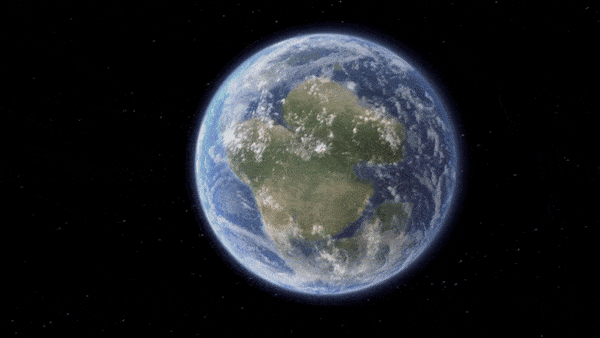When you purchase through links on our site , we may realise an affiliate commission . Here ’s how it works .
gamey plateaus climb up in the DoI of continents thanks to churning deep inside Earth hundreds of miles from where they eventually rebound up , Modern inquiry suggests .
As continents give out up , monumental drop walls may come up near the boundaries where the crust is pull aside . That breakup sets off a undulation inEarth ’s middle layer , the Mickey Mantle , that easy rolls in over tens of millions of twelvemonth , fueling the ascent of tableland , the newfangled study found .

Monks Cowl in the Great Escarpment of South Africa. This dramatic formation arose during the breakup of Gondwana, a new study shows.
link up : Fountains of diamonds that erupt from Earth ’s marrow are revealing the lost history of supercontinents
scientist have long known that continental rift touch off the rise of monolithic escarpments , like the cliff walls that separate theEast African Rift Valleyfrom the Ethiopian plateau , said leash authorThomas Gernon , a geoscientist at the University of Southampton in the U.K. And these steep cliffs sometimes fringe inland plateau that rise from the strong , static cores of continent , know as craton .
But because these two landscape painting feature unremarkably form tens of millions to up to 100 million years apart , many scientists thought the different formations were driven by different processes , Gernon told Live Science in an email .

In the new study , published Aug. 7 in the journalNature , Gernon and colleagues studied three iconic coastal escarpments that formed during the dissolution of Earth ’s lastsupercontinent , Gondwana . One , along India ’s slide , fringe the Western Ghats for about 1,200 miles ( 2,000 kilometers ) ; another , in Brazil , rings the Highland plateau for about 1,900 miles ( 3,000 kilometre ) ; and the Great Escarpment of South Africa circle the Central Plateau and spans a staggering 3,700 miles ( 6,000 km ) , according to the study . The interior tableland in these realm can rise a kilometer or more , Gernon order .
The team used topographic mathematical function to show the scarp align with the continental boundaries , which suggested that rifting make them . data processor simulations show that the continental rifts stir up the drape , triggering deep waves that roll in toward the continent ’s heart .
Next , they analyzed live mineral data point to show that upheaval and erosion on the plateau migrate inland at or so the same time and fastness as the drapery undulation churned mi below . This showed the two landscape features were likely triggered by the same continental breakup unconscious process .

In the eccentric of the three escarpments in the current study , the churn was achingly slow , work up at just 9 to 12 naut mi ( 15 to 20 km ) every million year , the study establish . Yet this slow - movement drape wave dramatically reshape the landscape . As it parade inward , it progressively peeled off the hard roots that anchor continents at the crust - mantle boundary . Without these anchors , the cratons became more chirpy and therefore rise .
hint and rain over the eon then pare them aside further , making them lighter and more buoyant still . This outgrowth culminated in the stable , high plateaus we see today .
In theory , the same process may explicate other escarpment / tableland neighborhood , such as one in North and South Carolina or one south of Cameroon , Gernon said . The cliffs and plateau in the Carolinas are less spectacular than the three study in the theme , likely because they form up to 100 million years earlier than the three Gernon ’s team try . That pay erosion tens of millions of years to efface ghost of both mantle butter churn and uplift .

— Zealandia , Earth ’s secret continent , was torn from supercontinent Gondwana in flood of fire 100 million days ago
— Massive supercontinent will take form 100 of millions of years from now
— scientist finally discover ' lost continent ' thought to have go away without a trace

" Escarpments from much earlier separation events are improbable to be preserve in the geologic phonograph record , " Gernon said .
The same supercontinent separation and mantle wave is a accelerator for other geologic process , including theeruption of diamonds from Earth ’s centre , Gernon ’s squad previously found .
" It is fascinating to think that a diamond worn on an engagement ring may be just one of the resultant role of the same geologic mental process that form some of Earth ’s most dramatic landforms , " Gernon said .











